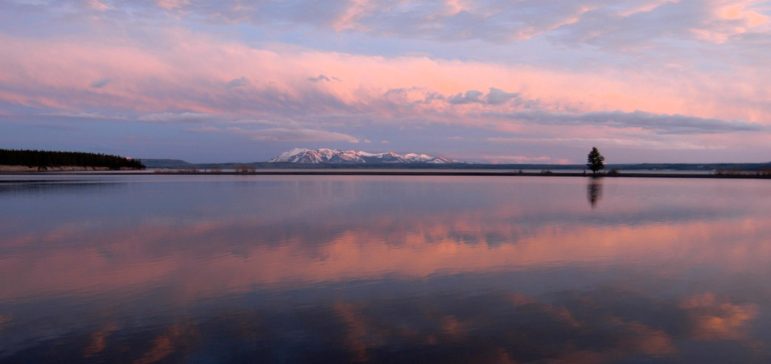
Yellowstone Lake is the largest alpine lake in the U.S., and its waters remain frigid and dangerous to swimmers who risk hypothermia even in warmer months.
A commercial guide leading a group of kayakers in Yellowstone National Park died Wednesday after attempting to rescue a client who capsized in the frigid waters of Yellowstone Lake.
Timothy Hayden Ryan Conant, 23, from Salt Lake City, Utah, died after rangers responding to a cal for help found in the water in the West Thumb area of Yellowstone Lake, according to a statement released by the park’s public affairs office.
One of nine kayakers being led on the trip by three guides had capsized, and was rescued by other guides while Conant was also attempting to assist. Guides brought the client to short before rangers arrived on scene to help Conant. The client was transported to the park clinic and treated for hypothermia.
Rangers responded to the scene in a patrol boat and found Conant in the water, according to park officials. They brought him on board and started CPR while in route back to the dock. First responders continued CPR as they transported Conant by ambulance less than a mile from the dock to a helipad at Grant Village. A helicopter arrived to transport Conant, but he was pronounced dead before taking off.
Conant worked as a guide for Oars, a California company that has offered non-motorized boat tours in Yellowstone under a permit since 1996. This was Conant’s first season working for Oars as a guide.
“Our hearts are with the Conant family after this terrible loss,” said Superintendent Dan Wenk.
The incident is still under investigation.
Since 1894, 41 people have died in Yellowstone Lake. The most recent was in 1997 when two people died while canoeing.
With a surface area of 132 square miles, Yellowstone Lake is the largest natural freshwater lake in the United States that is above 7,000 feet. It is roughly 20 miles long and 14 miles wide with 141 miles of shoreline. The lake’s waters remain cold year-round, limiting survivable exposure to approximately 30 minutes, even in warmer months.
